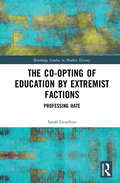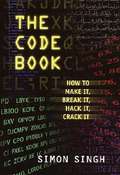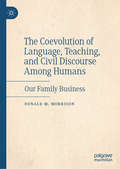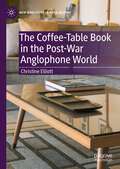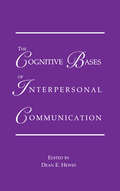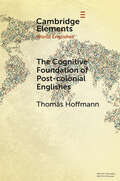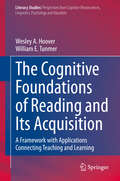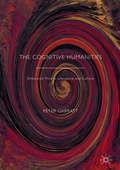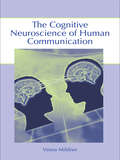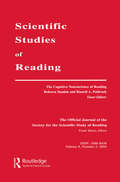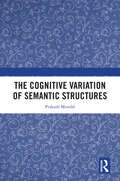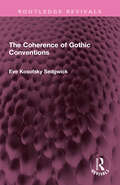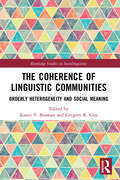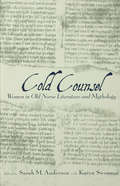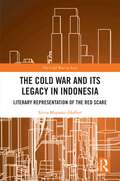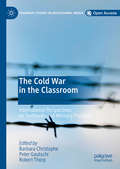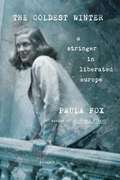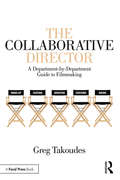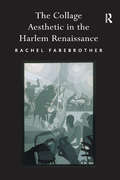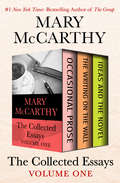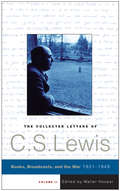- Table View
- List View
The Co-opting of Education by Extremist Factions: Professing Hate (Routledge Studies in Modern History)
by Sarah GendronThe Co-opting of Education by Extremist Factions: Professing Hate is a study of the ways in which various extremist groups have appropriated education for social manipulation in order to gain political power, and, in some cases, to incite violence. It is a detailed exploration of case studies representing both a wide range of situational differences (time, place, and political orientation) and experiential similarities. To examine a broad scope of circumstances, this book explores various types of rule (from National Socialism to communism to capitalism) from around the world (Europe, Asia, Africa, and North America) and spans time periods from the mid-twentieth century to the beginning of the twenty-first century. With the purpose of allowing these diverse situations to dialogue with one another, this study explores each country in its own right as well as in relation to others, ultimately demonstrating the extent to which they influenced one another.
The Code Book: How to Make it, Break it, Hack it, Crack it
by Simon SinghIt's known as the science of secrecy. Cryptography: the encoding and de coding of private information. And it is history's most fascinating story of intrigue and cunning. The battle between codemakers and codebreakers has been going on for centuries: from Julius Caesar and his Caesar cipher to the codebreaking achievements of the tenth-century Arabs; from the code used by Mary Queen of Scots in an attempt to dethrone Elizabeth I to Sir Francis Walsingham's decipherment of that code, which led to Mary's execution for treason; from the Germans' use of the Enigma machine for automatic encryption in the Second World War to Alan Turing's efforts to infiltrate Enigma, which contributed to the Allied victory. And the battle rages on. How private are your e-mail communications? How secure is sending your credit card information over the Internet? And how much secrecy will the government tolerate? Simon Singh follows the evolution of secret writing with a clarity that lets the reader enjoy the captivating story while easily absorbing the details of cryptography. Woven throughout are clear and concise illustrations of the processes of enciphering and deciphering. Accessible, compelling and timely, this international bestseller, now adapted for young people, is sure to make readers see the past- and the future-in a whole new way.
The Coevolution of Language, Teaching, and Civil Discourse Among Humans: Our Family Business
by Donald M. MorrisonThis book traces the evolutionary trajectory of language and teaching from the earliest periods of human evolution to the present day. The author argues that teaching is unique to humans and our ancestors, and that the evolution of teaching, language, and culture are the inextricably linked results of gene-culture coevolutionary processes. Drawing on related fields including archaeology, palaeontology, cultural anthropology, evolutionary psychology and linguistics, he makes the case that the need for joint attention and shared goals in complex adaptive strategies is the underlying driver for the evolution of language-like communication. This book will be of interest to students and scholars of these disciplines, as well as lay readers with an interest in human origins.
The Coffee Dictionary: An A-Z of coffee, from growing & roasting to brewing & tasting
by Maxwell Colonna-DashwoodAn A-Z compendium of everything you need to know about coffee, from a champion barista.Coffee is more popular than ever before - and more complex. The Coffee Dictionary is the coffee drinker's guide to the dizzying array of terms and techniques, equipment and varieties that go into creating the perfect cup. With hundreds of entries on everything from sourcing, growing and harvesting, to roasting, grinding and brewing, three-time UK champion barista and coffee expert Maxwell Colonna-Dashwood explains the key factors that impact the taste of your drink.Illustrated throughout and covering anything from country of origin, variety of bean and growing and harvesting techniques to roasting methods, brewing equipment, tasting notes - as well as the many different coffee-based drinks - The Coffee Dictionary is the final word on coffee.
The Coffee-Table Book in the Post-War Anglophone World (New Directions in Book History)
by Christine ElliottThe Coffee-Table Book in the Post-War Anglophone World argues that coffee-table books appeared and became popular in the post-war era at the convergence of three important developments: advances in full colour printing technology, social change, and publishing entrepreneurism and innovation. Examining the coffee-table book through a book history lens acknowledges their significant contribution to post-war visual culture and illustrated publishing. Focussing on post-war America, Great Britain, and Australia during the “golden age” era of the 1950s, 1960s, and 1970s, this history of the coffee-table book takes an interdisciplinary approach to put the coffee-table book in context in regards to materiality, format, printing, status, and genre.
The Cognitive Bases of Interpersonal Communication (Routledge Communication Series)
by Dean E. HewesOur interpretations of the world we live in, and the people and institutions that comprise it, are acquired through complex interactions among what we believe to be true, what the world is, and/or what others think it is. Understanding those complex interactions is one of the most important goals of the social sciences. Of the many disciplines that have contributed to that understanding, two take center stage in this book -- psychology and communication. This volume's purpose is to reconnect the partially isolated environments of social psychology and communication. To do so, it utilizes four building blocks: * the cognitive foundations of interpersonal communication as it might be studied from a social psychological perspective * insiders' views of interpersonal communication from a cognitive psychological standpoint * insiders' approaches to interpersonal communication from an AI perspective * a critique of the cognitive enterprise that reflects the strong philosophical grounding of communication. Overall, the chapters typify some of the most interesting cognitive work done in the study of interpersonal communication. As such, the book should promote productive dialogue across disciplinary boundaries and stimulate further work within the field of interpersonal communication.
The Cognitive Foundation of Post-colonial Englishes: Construction Grammar as the Cognitive Theory for the Dynamic Model (Elements in World Englishes)
by Thomas HoffmannVarieties of English are spoken all over the world from Africa to Asia, from Europe to America. In addition to its use as a foreign language, English in many of these countries is a first or second language variety that initially arose in a colonial setting. Currently, the most influential sociolinguistic model for the evolution of these 'Post-Colonial Englishes' is the Dynamic Model. In this Element, I outline how Construction Grammar, the most prominent cognitive syntactic theory, can provide a cognitive foundation for the assumptions made by the Dynamic Model. As I shall argue, Construction Grammar naturally complements the Dynamic Model and, in addition to that, a 'Constructionist Grammar Approach to the Dynamic Model' approach generates new research questions concerning the productivity of syntactic patterns across Dynamic Model phases.
The Cognitive Foundations of Reading and Its Acquisition: A Framework with Applications Connecting Teaching and Learning (Literacy Studies #20)
by William E. Tunmer Wesley A. HooverThis book serves as a succinct resource on the cognitive requirements of reading. It provides a coherent, overall view of reading and learning to read, and does so in a relatively sparse fashion that supports retention. The initial sections of the book describe the cognitive structure of reading and the cognitive foundation upon which that structure is built. This is followed by discussions of how an understanding of these cognitive requirements can be used in practice with standards, assessments, curriculum and instruction, to advance the teaching of reading and the delivery of interventions for students who encounter difficulties along the way. The book focuses on reading in English as its exemplar, but shows how its framework can be adapted to understand the broad cognitive requirements for reading and learning to read in any phonologically-based orthography. It provides a way for reading professionals to think about reading and its development and gives them mechanisms that, coupled with such understanding, will help them link what children must know to become strong readers to what teaching can best provide through the competent use of available tools. In this way, the book will help reading professionals be both efficient and effective in what they provide all their students and be much better equipped to support those students who struggle to learn to read.
The Cognitive Humanities: Embodied Mind in Literature and Culture
by Peter GarrattThis book identifies the ‘cognitive humanities’ with new approaches to literature and culture that engage with recent theories of the embodied mind in cognitive science. If cognition should be approached less as a matter of internal representation—a Cartesian inner theatre—than as a form of embodied action, how might cultural representation be rethought? What can literature and culture reveal or challenge about embodied minds? The essays in this book ask what new directions in the humanities open up when the thinking self is understood as a participant in contexts of action, even as extended beyond the skin. Building on cognitive literary studies, but engaging much more extensively with ‘4E’ cognitive science (embodied, embedded, enactive, extended) than previously, the book uses case studies from many different historical settings (such as early modern theatre and digital technologies) and in different media (narrative, art, performance) to explore the embodied mind through culture.
The Cognitive Neuroscience of Human Communication
by Vesna MildnerThis is a book about speech and language. It is primarily intended for those interested in speech and its neurophysiological bases: phoneticians, linguists, educators, speech therapists, psychologists, and neuroscientists. Although speech and language are its central topic, it provides information about related topics as well (e.g. structure and functioning of the central nervous system, research methods in neuroscience, theories and models of speech production and perception, learning, and memory). Data on clinical populations are given in parallel with studies of healthy subjects because such comparisons can give a better understanding of intact and disordered speech and language functions. There is a review of literature (more than 600 sources) and research results covering areas such as neuroanatomy, neurophysiology, development of the nervous system, sex differences, history of neurolinguistics, behavioral, neuroimaging and other research methods in neuroscience, linguistics and psychology, theories and models of the nervous system function including speech and language processing, kinds of memory and learning and their neural substrates, critical periods, various aspects of normal speech and language processes (e.g. phonetics, phonology, syntax, semantics, reading), bilingualism, speech and language disorders, and many others. Newcomers to the field of neurolinguistics will find it as readable as professionals will because it is organized in a way that gives the readers flexibility and an individual approach to the text. The language is simple but all the technical terms are provided, explained, and illustrated. A comprehensive glossary provides additional information.
The Cognitive Neuroscience of Reading: A Special Issue of scientific Studies of Reading
by Russell A. Poldrack Rebecca SandakThis special issue of Scientific Studies of Reading highlights the great deal of progress that has been made recently in understanding the neurobiological foundations of basic processes in reading. The papers demonstrate how functional neuroimaging techniques have provided novel insights into how reading works in the brain, and how these processes may be disorganized in reading disorders. Importantly, they illustrate that understanding how reading works in the brain is not a simple end-goal, but rather reveals new phenomena that will serve to constrain theories of reading. Although these articles make clear that full understanding of these processes is well off in the distance, the editors hope that they will inspire further collaboration between reading researchers and neuroscientists.
The Cognitive Variation of Semantic Structures
by Prakash MondalThis book explores the cognitive constraints and principles of variation in structures of linguistic meaning across languages. It unifies cognitive-semantic representations with formal-semantic representations to make a unique contribution to the study of typological generalizations and universals in natural language semantics. This unified approach not only helps reveal why semantic structures have the observed variation they have but also sheds light on the compelling cognitive and formal regularities and patterns in the variation of linguistic semantics. The book also advances the general principles of a cognitively oriented semantic typology.Lucid and topical, the book will be an indispensable resource for students and researchers of language typology, linguistics, cognitive linguistics and semantics. It will also be of interest to theoretical linguists of both cognitivist and formalist schools.
The Coherence of Gothic Conventions (Routledge Revivals)
by Eve Kosofsky SedgwickFirst published in 1986, The Coherence of Gothic Conventions makes the case that the Gothic in English literature has been marked by a distinctive and highly influential set of ambitions about relations of meaning. Through readings of classic Gothic authors as well as of De Quincey and the Brontës, Sedgwick links the most characteristic thematic conventions of the Gothic firmly and usably to the genre’s radical claims for representation. The introduction clarifies the connection between the linguistic or epistemological argument of the Gothic and its epochal crystallization of modern gender and modern homophobia. This book will be of interest to students of literature, cultural studies and psychology.
The Coherence of Linguistic Communities: Orderly Heterogeneity and Social Meaning (Routledge Studies in Sociolinguistics)
by Karen V. Beaman Gregory R. GuyThis innovative collection brings together a range of perspectives on the notions of "orderly heterogeneity" and "social meaning", shedding light on how structured variation and indexicalities of social meaning "cohere" within linguistic communities. This book fills a gap in research on language variation by critically considering the position articulated by Weinrich, Labov, and Herzog in 1968 that linguistic diversity is systematically organized in ways that reflect and construct social order. The volume investigates such key themes as covariation and co-occurrence restrictions; indexicality, perception and social meaning; coherence and language change; and the structure and measurement of coherence at different levels of analysis. This collection advances our understanding of the coherence of linguistic communities through empirical investigations of larger and more diverse sets of variables, language varieties, speech styles, and communities, as afforded by the development and advancement of new methods and models in sociolinguistic research. This book is of interest to scholars in sociolinguistics, language variation and change, and formal linguistics, as well as those interested in developments on research methods in linguistics.
The Cold Counsel: The Women in Old Norse Literature and Myth
by Sarah M. Anderson Karen SwensonCold Counsel is the only collection devoted to the place of women in Old Norse literature and culture. It draws upon the disciplines of history, sociology, feminism, ethnography and psychoanalysis in order to raise fresh questions about such new subjects as gender, class, sexuality, family structure and ideology in medieval Iceland.
The Cold War and its Legacy in Indonesia: Literary Representation of the Red Scare (The Cold War in Asia)
by Silvia Mayasari-HoffertMayasari-Hoffert examines the depiction of the Left in Indonesian literature since the anti-leftist purge in 1965. With close textual analysis of Indonesian literary texts and their political context, this book investigates how the New Order regime under Suharto was able to build a metanarrative of liberation while purging the Left in Indonesia. Even after the regime’s end in 1998, many Indonesians still have an ingrained fear of the prospect of Communism, with the result being that literary representation of the Left is still seen as problematic. Through reviewing Indonesia’s institution of literature, the use and abuse of universal humanism under the New Order regime is examined, and the ways in which power intersects with literature is explored. An informative read for scholars and students of Indonesian politics, literature, and the cultural cold war.
The Cold War in the Classroom: International Perspectives on Textbooks and Memory Practices (Palgrave Studies in Educational Media)
by Barbara Christophe Peter Gautschi Robert ThorpThis book is open access under a CC BY 4.0 license.This book explores how the socially disputed period of the Cold War is remembered in today’s history classroom. Applying a diverse set of methodological strategies, the authors map the dividing lines in and between memory cultures across the globe, paying special attention to the impact the crisis-driven age of our present has on images of the past. Authors analysing educational media point to ambivalence, vagueness and contradictions in textbook narratives understood to be echoes of societal and academic controversies. Others focus on teachers and the history classroom, showing how unresolved political issues create tensions in history education. They render visible how teachers struggle to handle these challenges by pretending that what they do is ‘just history’. The contributions to this book unveil how teachers, backgrounding the political inherent in all memory practices, often nourish the illusion that the history in which they are engaged is all about addressing the past with a reflexive and disciplined approach.
The Coldest Winter: A Stringer in Liberated Europe
by Paula FoxA Washington Post Book World Critic's Choice of the Year In this elegant and affecting follow-up to her extraordinary memoir, Borrowed Finery, a young writer travels through a Europe ravaged by the Second World War.
The Collaborative Director: A Department-by-Department Guide to Filmmaking
by Greg TakoudesThe Collaborative Director: A Department-by-Department Guide to Filmmaking explores the directorial process in a way that allows the director to gather the best ideas from the departments that make up a film crew, while making sure that it is the director’s vision being shown on screen. It goes beyond the core concepts of vision, aesthetic taste, and storytelling to teach how to effectively collaborate with each team and fully tap into their creative potential. The structure of the book follows a budget top sheet, with each chapter describing the workflow and responsibilities of a different department and giving insights into the methods and techniques a director can use to understand the roles and dynamics. Each chapter is divided into four sections. Section one provides an overview of the department, section two focuses on directors who have used that department in notably effective ways, section three looks at collaboration from the reverse perspective with interviews from department members, and section four concludes each chapter with a set of tasks directors can use to prepare. Ideal for beginner and intermediate filmmaking students, as well as aspiring filmmakers and early career professionals, this book provides invaluable insight into the different departments, and how a director can utilize the skills and experience of a crew to lead with knowledge and confidence.
The Collage Aesthetic in the Harlem Renaissance
by Rachel FarebrotherBeginning with a subtle and persuasive analysis of the cultural context, Farebrother examines collage in modernist and Harlem Renaissance figurative art and unearths the collage sensibility attendant in Franz Boas's anthropology. This strategy makes explicit the formal choices of Harlem Renaissance writers by examining them in light of African American vernacular culture and early twentieth-century discourses of anthropology, cultural nationalism and international modernism. At the same time, attention to the politics of form in such texts as Toomer's Cane, Locke's The New Negro and selected works by Hurston reveals that the production of analogies, juxtapositions, frictions and distinctions on the page has aesthetic, historical and political implications. Why did these African American writers adopt collage form during the Harlem Renaissance? What did it allow them to articulate? These are among the questions Farebrother poses as she strives for a middle ground between critics who view the Harlem Renaissance as a distinctive, and necessarily subversive, kind of modernism and those who foreground the cooperative nature of interracial creative work during the period. A key feature of her project is her exploration of neglected connections between Euro-American modernism and the Harlem Renaissance, a journey she negotiates while never losing sight of the particularity of African American experience. Ambitious and wide-ranging, Rachel Farebrother's book offers us a fresh lens through which to view this crucial moment in American culture.
The Collected Essays Volume One: Occasional Prose, The Writing on the Wall, and Ideas and the Novel
by Mary McCarthySpirited and insightful essays from the #1 New York Times–bestselling author of Memories of a Catholic Girlhood and a &“delightfully polished writer&” (The Atlantic Monthly). Whether penning criticism, memoir, or fiction, the New York Times–bestselling author of The Group invariably wrote with &“an icily honest eye and a glacial wit&” (The New York Times). Gathered here are three collections of her personal essays and literary criticism. Occasional Prose: McCarthy imbues this collection with her unique gifts of clear-eyed observation, sharp insight, and heartfelt passion as she gives us the story of La Traviata in her own words, reviews a charming and practical book on gardening, revisits Tolstoy&’s Anna Karenina, and eulogizes friends, including Hannah Arendt. &“Bracing opinions tartly expressed . . . May she continue to call us all to attention . . . showing us the world of her imagination, thought and rich experience.&” —The New York Times The Writing on the Wall: With engaging and thought-provoking essays on Madame Bovary, Macbeth, Vladimir Nabokov, George Orwell, William S. Burroughs, J. D. Salinger, and Hannah Arendt, this collection of literary reactions is distinguished by McCarthy&’s savage intelligence, clarity of thought, and utter lack of pretension. &“The brand name tells all. Potential readers do not have to be informed by me of the excellence of this volume—the acumen, intelligence, clarity, wit and lack of bitchiness.&” —Anthony Burgess, The New York Times Ideas and the Novel: In this lively, erudite book, McCarthy throws down the gauntlet: Why did the nineteenth century produce novels of ideas while the twentieth century is so lacking in serious fiction? Could Henry James be a big part of the problem? With verve and passion, McCarthy provides a critique of how the novel has evolved—or not—in the last century. &“[McCarthy&’s] writing is spirited. [Her] musings serve a larger purpose, make a grander statement, or rather, indictment. She means to set the modern novel apart.&” —The Harvard Crimson
The Collected Essays Volume Two: Mary McCarthy's Theatre Chronicles, 1937–1962 and On the Contrary
by Mary McCarthyCandid, sharp, and entertaining essays from the #1 New York Times–bestselling author of Memories of a Catholic Girlhood and a “delightfully polished writer” (The Atlantic Monthly). Whether penning criticism, memoir, or fiction, the New York Times–bestselling author of The Group invariably wrote with “an icily honest eye and a glacial wit” (The New York Times). Gathered here are two memorable collections: theatrical critiques and opinion pieces. Mary McCarthy’s Theatre Chronicles, 1937–1962: McCarthy weighs in on Shakespeare, George Bernard Shaw, Henrik Ibsen, Eugene O’Neill, Tennessee Williams, and Arthur Miller with candor, penetrating insight, and wit. On the Contrary: Articles of Belief, 1946–1961: McCarthy expresses her frank, unflinching, often contrarian point of view in these provocative essays addressing everything from fashion to fiction, the human condition, religion, sex, Arthur Miller’s testimony before the House Un-American Activities Committee, The Human Condition by Hannah Arendt, Charles Dickens, and Gandhi.
The Collected Letters Of Dylan Thomas
by Paul FerrisDylan Thomas's letters bring the poet and his times to life in a way that almost no biography can. First published by J. M. Dent in 1985, Thomas's Collected Letters received exceptional reviews, both for the scholarship of the editor, and for the quality of the collection. This new edition will bring the letters back into print at a time when interest is renewed in the life of this exceptional writer. The letters begin in the poet's schooldays, and end just before his death in New York at the age of 39. In between, he loved, wrote, drank, begged and borrowed his way through a flamboyant life. He was an enthusiastic critic of other writers' work and the letters are full of his thoughts on his own work and on his friends, as well as unguarded and certainly unpolitical comments on the work of his contemporaries - T.S. Eliot, W.H. Auden and Stephen Spender among others. ('Spender should be kicked...Day-Lewis hissed in public and have his balls beaten with a toffee hammer') More than a hundred new letters have been added since Paul Ferris edited the first edition of the Collected Letters in 1985. They cast Thomas's adolescence in Swansea and his love affair with Caitlin into sharper focus. Thomas's letters tell a remarkable story, each letter taking the reader a little further along the path of the poet's self-destruction, but written with such verve and lyricism that somehow the reader's sympathies never quite abandon him.
The Collected Letters of C.S. Lewis, Volume 2
by C. S. LewisC. S. Lewis was a prolific letter writer, and his personal correspondence reveals much of his private life, reflections, friendships, and the progress of his thought. This second of a three-volume collection contains the letters Lewis wrote after his conversion to Christianity, as he began a lifetime of serious writing. Lewis corresponded with many of the twentieth century's major literary figures, including J. R. R. Tolkien and Dorothy Sayers. Here we encounter a surge of letters in response to a new audience of laypeople who wrote to him after the great success of his BBC radio broadcasts during World War II -- talks that would ultimately become his masterwork, Mere Christianity. Volume II begins with C. S. Lewis writing his first major work of literary history, The Allegory of Love, which established him as a scholar with imaginative power. These letters trace his creative journey and recount his new circle of friends, "The Inklings," who meet regularly to share their writing. Tolkien reads aloud chapters of his unfinished The Lord of the Rings, while Lewis shares portions of his first novel, Out of the Silent Planet. Lewis's weekly letters to his brother, Warnie, away serving in the army during World War II, lead him to begin writing his first spiritual work, The Problem of Pain. After the serialization of The Screwtape Letters, the director of religious broadcasting at the BBC approached Lewis and the "Mere Christianity" talks were born. With his new broadcasting career, Lewis was inundated with letters from all over the world. His faithful, thoughtful responses to numerous questions reveal the clarity and wisdom of his theological and intellectual beliefs. Volume II includes Lewis's correspondence with great writers such as Owen Barfield, Arthur C. Clarke, Sheldon Vanauken, and Dom Bede Griffiths. The letters address many of Lewis's interests -- theology, literary criticism, poetry, fantasy, and children's stories -- as well as reveal his relation ships with close friends and family. But what is apparent throughout this volume is how this quiet bachelor professor in England touched the lives of many through an amazing discipline of personal correspondence. Walter Hooper's insightful notes and compre hensive biographical appendix of the correspon dents make this an irreplaceable reference for those curious about the life and work of one of the most creative minds of the modern era.
